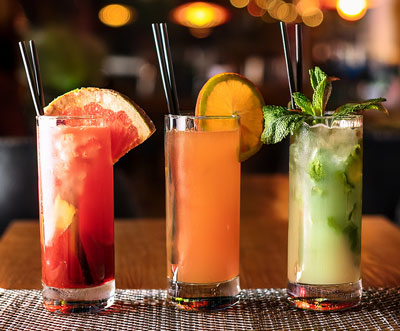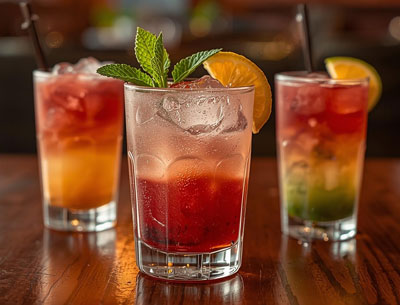
Mocktails Are Becoming a Must-Have on Modern Menus
Mocktails are no longer an afterthought. Guests want drinks that feel special, taste layered, and look great in photos, even when there is no alcohol involved. As demand grows, restaurants across the country are expanding their non-alcoholic drink menus. When you give guests wellcrafted zero-proof options, you elevate the dining experience and often boost check averages simultaneously.
Industry data shows that mentions of mocktails on menus are increased more than 30% since 2019, and continued to grow last year. Restaurants are discovering that guests who are skipping alcohol still want something crafted with intention. The more creativity you put into your mocktails, the more they sell.
MOCKTAILS APPEAL TO A GROWING SHARE OF GUESTS
Interest in non-alcoholic drinks is rising fast, especially among younger adults and women. Women, in particular, are increasingly choosing zeroproof options. A recent national survey showed an 11% drop in alcoholic drink offerings in a single year. This shift is driven by the growing awareness of how alcohol affects hormonal balance and a desire to align lifestyle choices with current health knowledge.
There is also a larger cultural shift happening. Data shows that only about 54% of Americans drink alcohol, the lowest rate in nearly 90 years. Health is the top reason people give for cutting back. With growing research linking alcohol to higher cancer risk and more health experts stating no amount is truly safe, guests still want to enjoy a night out, but they would prefer high-quality drinks without the alcohol.
Mocktails shine by giving people the same sense of ritual and celebration without the downsides of drinking.

WHY MOCKTAILS BOOST REVENUE
Non-alcoholic beverage sales have been climbing across the restaurant industry. A Restaurant Dive report found that restaurants with a strong zero-proof menu saw sales from non-alcoholic beverages grow by 30% in a single year. Another analysis showed that restaurants earning around two million in annual revenue added roughly $95,000 just by creating better non-alcoholic options.
Guests also associate mocktails with craft beverages, premium flavors, and intentional hospitality. When the drinks are well-made, they feel like a true part of the dining experience rather than a substitute. That helps justify the price point and increases the likelihood that guests order a second round.
WHAT MAKES A GOOD MOCKTAIL
Treat mocktails with the same respect as cocktails.
Place them in a dedicated section and give them real names. Use good glassware, fresh citrus, house syrups, herbs, and garnishes. As Square published guidance encourages, develop a non-alcoholic menu that rivals your cocktail list. When mocktails are presented with this level of detail, guests take them seriously.
Build flavor that is balanced and interesting.
Modern mocktails are not just sugary fruit blends. Bartenders are using botanical spirits, cold brew teas, spice infusions, and shrubs to create depth and complexity. Bar and Restaurant Magazine reported that the most successful mocktails are bold, layered, and built with intention.
Price your mocktails correctly.
Guests are willing to pay for quality. A Michigan Restaurant and Lodging Association article pointed out that people are not giving up on going out; they simply want options that fit a healthier lifestyle. When your mocktails look and taste premium, pricing them alongside cocktails feels natural.
Make sure your staff knows the menu.
Your team should talk about mocktails with the same confidence and detail as traditional drinks. Servers who proactively highlight your zero-proof drinks will sell more of them. Positive language and simple recommendations go a long way.
MOCKTAILS FIT TODAY’S HEALTH AND LIFESTYLE TRENDS
Guests are more conscious about sleep, stress levels, hormonal balance, and long-term wellness. Many want to limit alcohol, not eliminate it entirely. Mocktails let them enjoy the atmosphere without compromising their goals. Social media also plays a role: eye-catching zero-proof drinks perform well online, which brings more visibility to your restaurant.
Thoughtful non-alcoholic options also help guests stay longer. When people who are skipping alcohol feel included and engaged, it raises the likelihood of ordering another drink or dessert, which increases the overall check average.
FINAL THOUGHTS
Mocktails are not a passing trend. They reflect a broader shift toward healthier lifestyle choices, inclusive dining, and premium beverage experiences. When restaurants design mocktails with the same care as cocktails, they see stronger engagement from guests along with higher beverage revenue.
Offering a well-curated non-alcoholic drink menu shows that you value all guests. It helps you stay relevant, increases your reach, and creates more memorable moments around the table. In a competitive dining landscape, that matters.
